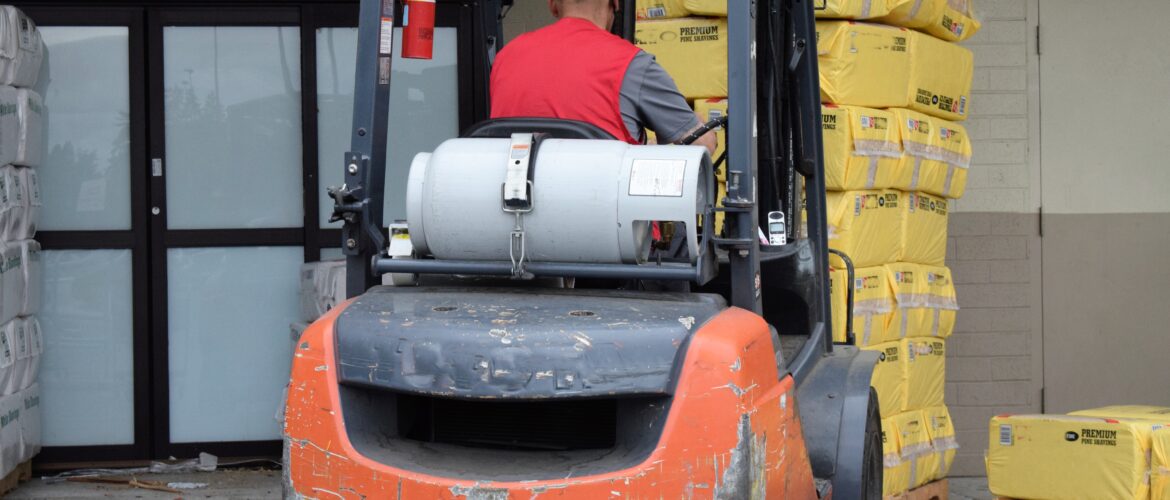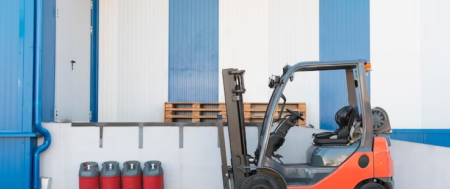The forklifts play an integral part in everyday life of warehouses and manufacturing industries, these machines are helpful and have a crucial role in material handling equipment, making them an indispensable part of numerous industries. Forklifts, like any other piece of equipment, are not immune to difficulties that might impede their functioning and pose safety hazards.
Regular maintenance of forklift is essential for maintaining forklifts in good functioning order. Neglecting maintenance can result in expensive repairs, downtime, and safety concerns. In this article, we’ll look at typical forklift problems and talk about preventative maintenance to keep these huge equipment running smoothly.
FORKLIFT ISSUES AND SOLUTIONS
Forklift maintenance may appear to be a costly inconvenience. Setting up preventative maintenance routines and replacing hoses, fluids, forks, or tires before they break may appear to be a waste of time and money.
However, frequent maintenance of forklift is critical for preventing costly breakdowns, reducing unnecessary downtime, and prolonging the life of your forklifts. You will be able to discover minor faults before they become larger and more expensive with the correct maintenance plan.
Below are some of the common forklift issues you can face and how to handle them with preventive maintenance.
Battery Issues
Electric forklifts rely on batteries for power. A faulty battery may have a major influence on the performance and uptime of your forklift. Therefore, you should take good care of your refurbished forklift’s battery.
If you turn on the ignition and hear a simple clicking sound instead of an engine sound, the battery is most likely the issue.
First, ensure that:
- Your battery is fully charged and securely attached.
- Check the charging status of your battery: When was the battery last charged?
- Temperature: If it’s too cold outside, your battery may not work. Like a car, a forklift battery might struggle to start in subzero conditions.
- Check the following supplementary features: Examine the operation of your lights, brakes, and other systems. You may need to recharge your battery if they don’t work. If you have just recharged a battery and it is still not working, it is time to replace it.
- Battery terminals and connections can be harmed by corrosion.
- Sulfation happens when a battery is kept drained for an extended period of time, diminishing its capacity.
- It’s better to schedule maintenance of the forklift routine at least once a week and stay current.
Engine Not Starting
Before ruling out the battery as the cause of the engine not starting, check to determine whether the battery is low and unable to feed the ignition system adequately.
Is there anything flashing? Is the dashboard generally illuminated? If this is the case, your battery or electrics are most likely unrelated to the problem.
If the battery is working properly, an engineer should look at a range of additional issues. Some of the Forklift issues might occur because:
Spark Plugs: Spark plugs are a common reason for forklifts turning over but not starting. If you have a spark tester, you can measure the strength of the spark. If the spark is weak and yellow, the plug may need to be replaced. A powerful, blue spark is a fantastic spark.
The condenser, rotor, and coil wires are other ignition system components that must be inspected. Replacement is required for any of these corroded or damaged components. Even if they are not the primary cause of the issue, completing this maintenance is prudent.
Fuel System: If your ignition system is working properly, you may have a fuel system problem. The gasoline filter, lock-off valve, fuel regulator, and tank connector (LPG) are all components to consider.
The first step in diagnosing a forklift that turns over but won’t start is elimination. If you have a mechanic on-site, basic visual inspections and testing may be enough to identify the defective part (or parts).
Kill Switch (Emergency Power Off) : Forklifts have an emergency stop button. If this was triggered the last time the forklift was in use, it must be disabled before the forklift may be started.
Brake Problems
Forklift brakes are an important safety component. Accidents and injuries might result from brake problems. If brakes are not working properly you can face some serious forklifts issues which might become costly. The following are examples of common braking problems:
Brake Fading: As brakes wear out, they become less sensitive, resulting in greater stopping distances. They can also immediately stop while working which will damage your forklift and can take a few days in full repairing.
Brake Fluid Leaks: Brake fluid leaks might diminish the braking system’s efficacy which can harm your forklift and it will be a good option to regularly change oil and have a check and balance on it.
Worn Brake Pads: To maintain appropriate braking, worn brake pads should be changed and they are one of the most important things to add in forklift maintenance checklist.
Forklift Steering Issues
It is difficult to ignore steering faults, especially while operating a forklift. Poor or insufficient steering fluid might impair the wheel’s ability to shift direction.
Furthermore, driving a forklift with steering problems is particularly risky since it puts the driver at risk of an accident, which can result in a potentially fatal injury. To avoid such instances, consider the following troubleshooting procedures if you encounter this issue:
Check the steering fluid – Low steering fluid levels might impair the forklift’s ability to change directions.
Examine the wheel alignment – It’s better to fully check the wheel alignment whenever you start your forklift.
Examine the condition of the steering assembly’s gears – A rusted steering system or worn-out gears might also cause steering issues. To extend the life of the machine, replace damaged or worn-out parts with original spare parts.
Strange noises while steering the forklift might indicate a rusted steering system, inadequate steering fluid, or mismatched tires. Other issues include faulty pressure valves or damaged gears. Check for these typical forklift problems on a regular basis.
Hose Failure
Hoses transport fluids into the engine and other components. These hoses must be airtight in order to function properly, and leaks reduce the hose’s efficiency. For example, if a hose in the hydraulics section leaks, the forklift will be unable to create enough pressure to raise the weight, reducing its efficiency.
As a result, when doing forklift service, it is critical to properly inspect every hose in the engine and inside the related systems. It is especially critical to inspect the areas where hoses connect to engines. These joints are prone to leaking. Also, thoroughly inspect the pipes before and after the shift for any symptoms of leaking. It is preferable to address these little leaks early on, before they develop into a catastrophic breakdown, resulting in lost time and money.
Advantages of Preventive Maintenance
Adopting a proactive maintenance approach for your forklifts has various advantages:
- Increased Safety
Regular maintenance of forklift ensures that important safety components are in good operating order, lowering the risk of accidents and injuries.
- Less downtime
Planned maintenance allows you to resolve issues before they cause unplanned downtime, allowing operations to function smoothly.
- Cost-cutting measures
Preventive maintenance may help your forklifts last longer, avoiding the need for costly repairs and replacements.
Conclusion
As forklifts are the most important material handling equipment to transport heavy loads, it’s better to have a check and balance of your forklift. Whenever you find any forklift issue, address it as soon as possible. Do not forget to make the forklift maintenance checklist so that you can have an idea about the next forklift maintenance day. In this way, the life of your forklift will increase and it will be beneficial for you as well during the different operations.


